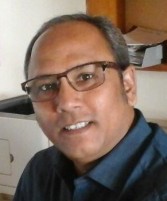 Dr. Alok Rath, Country Director – Uganda & South Sudan, VSO International -Twitter: @alokrath
Dr. Alok Rath, Country Director – Uganda & South Sudan, VSO International -Twitter: @alokrath
This year’s (HLPF) meeting at the UN in New York, which took place from 11th to 20th July, was historic. It was the first opportunity to ‘follow-up, review, and learn’ how Agenda 2030 for Sustainable development (Commonly known as the Sustainable Development Goals – SDGs) is being implemented in practice. Over 1,500 participants from Governments, Multilateral & Bilateral agencies, Civil Society and Private sector gathered in New York to attended 20 official sessions, hear 22 countries’ voluntary review their progress and attend a series of side events, centred on a theme – ‘Leaving No One Behind’.
Representing VSO and Civil Society, I was fortunate to have the opportunity to speak at three different events including at the Together 2030 side event entitled ‘Are we already being left behind? The role of civil society and stakeholders on national reviews of the 2030 Agenda for Sustainable Development’.
It was heartening to see the focus and resonance throughout the HLPF on the practical policies, strategies, mechanisms, and collective resourcing needed to ensure no one is left behind in pursuit of the SDGs. Oh Joon, the President of ECOSOC, reviewing week one of HLPF, mentioned how important it is for countries to mould the visible “nuggets of innovation” to their local contexts. The SDGs are highly ambitious and it requires an equally ‘inspiring leadership’ to achieve, as both Ban Ki Moon, the UN Secretary General and his deputy, Jan Eliasson, rightly emphasised.
Some of the key messages coming out of the HLPF, I felt, were: the need for strengthening of national statistical institutes; reaching the most marginalized first; revitalizing the global partnership; forging a science, technology and innovation (STI) cooperation; and making use of the SDG Report 2016 to address emerging issues and barriers.
What I thought central to achieving the SDGs was the need for a true partnership between the state, the people (primary actors), and the private sector. A number of sessions featured this debate over the two weeks. One such session, ‘Reaching the most vulnerable’, was a revelation to how some of the countries are positioning. Thailand shared how a “sufficiency economy” philosophy allowed the country to significantly achieve their Millennium Development Goals and how they expect to use it for SDG implementation. Mauritius highlighted how their ‘Social Registry’ tool enables them to target policy measures to the excluded groups in their country.
While Governments including Uganda are already demonstrating a strong political rhetoric around leaving no one behind, what is going to be crucial is what space and role Civil Society is allowed/ invited to play at all levels – local, national and international. Civil Society is a necessary ‘critical friend’ to support and influence how the partnership I mentioned above, shapes up and works to deliver a ‘Leaving no one behind’ agenda.
It seemed to me what was lacking at this year’s HLPF was evidence of how leaving no one behind is or should work from the perspective of citizens, people and in particular those that are most excluded. Notable was the fact that civil society did not have adequate space to engage with the voluntary SDG reviews of 22 countries.
The two week Action, however, was not without its share of criticism. The CSOs generally felt that the review process would perhaps have benefited significantly more had the Ministers arrived early, made the presentations at the start of the HLPF and listened to the interventions ranging from governments, civil society to private sector. Clearly there is a lot that countries need to do at the national level including an inclusive, rigorous and transparent national review process for their SDG progress than a visibly inadequate space at the UN HLPF. For example, the Uganda presentation was very short. As a response to the Government of Uganda’s report, the Uganda Civil Society Group submitted a rejoinder highlighting how marginalised groups such as people with disability need to be meaningfully included in SDG implementation planning to make the process empowering, transparent, accountable and thereby transformative.
I thought the CSO show was brilliant in patches. We could have done more with showcasing evidence of what is actually working to support SDG implementation on the ground. In any case, CSO space looked constrained as not much of our interventions and presentations seem to have gone on HLPF report. I felt we could do more with less number of joined up platforms. These are things we can reflect on and potentially improve for our contribution to future global and regional accountability meetings.
Moving forward to implement the SDGs, what will be crucial is that Governments have a comprehensive plan on localising the SDGs by building awareness of it amongst their own people, building the capacity of and empowering local governance structures to lead implementation, and enabling an inclusive platform for meaningful participation of the most disadvantaged and vulnerable people to analyse and inform decision making. This herculean task necessitates an organic engagement of civil society to ensure that leaving no one behind is delivered as a human rights promise. The billion volunteers such as those that work with VSO and other volunteer-led organisations are well placed to support such a robust civil society action.
I thank Together 2030 for giving me the opportunity to be a speaker at their side event and their leadership in pushing the civil society influence at the HLPF and beyond to see that the SDGs are implemented with no one left behind.

Great blog on an all-inclusive way to achieve the SDGs especially the role of of Civil Society.
LikeLike